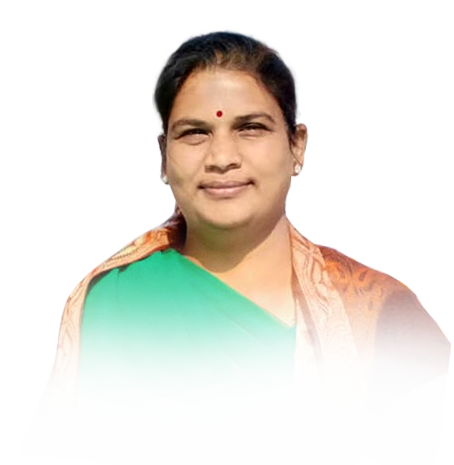Yoga Vidya Niketan (YVN), Member Institute of Indian Yoga Association successfully conducted its annual one-month Yoga Summer Course from May 1 to May 31, 2024. The course ran for one and a half hours daily across 41 physical centers around Mumbai and Navi Mumbai, extending…
by Dr. Divya Keshavamurthy, Life Member, IYA
Navaratri is a festival of Navadevis, which is associated with the Chakras (the psychic energy centers), present in the human body. During the Navaratri, if the yoga sadhaka meditates and contemplates on each Devi and each chakra, she is associated with, he will be blessed for attaining the different siddhis.
Mata Shailaputri is the worshipped on the first day of Navaratri to welcome the new beginnings of life. She is Devi of the Root/Muladhara chakra which is the starting point of the spiritual discipline. It is recommended that Yogis on the first day of the Navratri Pooja, should concentrate on the Muladhara chakra to help their body to resonate with the Mothers energy. She riding on a Bull is a symbolic representation of the needed determination for one to start their spiritual journey. Meditating on the Muladhara chakra provides the power and strength to do anything worthwhile.
Goddess Brahmacharini is worshipped on the second day of Navratri. Maa Brahmacharini governs the Swadhisthana Chakra, which belongs to Ap(Water) Tattva, its color being white with qualities of contraction, stimulating sense of taste and upon awakening of the same, the mind of the seeker helps in maintaining the devotion and dedication in a steady manner.
Chandraghanta Goddess is worshipped on the 3rd day of
Navaratri. She governs the Manipura chakra which is responsible for personal power, fear, anxiety, opinion-formation, introversion, and transition from simple or base emotions to complex. The Manipura Chakra embodies the change or conversion from simplicity to complexity.
Devi Kushmanda is worshiped on the 4th day of Navaratri. She also is known as ‘Ashtabhuja Devi’ as she has 8 hands. Connected to Anahata (Heart chakra), she blesses her devotees for body energetics, grants Ashtasiddhis (Success) and Navanidhis (Power & Wealth) and establishes harmony in one`s life.
Anahata chakra being the 4th centre in a man is instinctively aware of the joys and sorrows of others. The principle of the anahata chakra is love, and it is thought to contain the power to create energy and to transmit this energy to others. Meditating on this chakra one becomes pre-eminently wise and full of noble deeds. Psychokinetic powers develop with activation of this chakra as this controls sense of touch.
Goddess Skandamata is worshipped on the fifth day. Devi Skandamata is a symbol of the mother-son relationship which is both caring and protecting. She is associated to Vishuddha Chakra that energizes both thyroid and thymus gland. She corresponds to our hearing sense, udana prana and belongs to Akasha Tattva. The Yoga sadhaka meditating on this, gains knowledge, wisdom and ability to repel the negative forces and purify.
Goddess Katyayani is worshipped on the 6th day of Navaratri. She is ascribed to Ajna Chakra that is holistic in nature. Ajna translated as “authority” or “command” (or “perceive”), is considered the eye of intuition and intellect. Associated with the brain, it is the seat of the mind and kundalini. This chakra does not have a direct spinal column connection but is linked to two glands: the pituitary and the pineal gland (hypophysis and epiphysis) embedded in the brain. Shambhavi mudra practice helps in awakening this Ajna and synchronizes the functions of both the brain hemispheres. Ajna chakra is the key to Prana vidya (Psychic control & Healing), sankalpa Shakti (will power), higher consciousness. The Ajna Chakra is the Master chakra that controls all the other chakras and its function is active intelligence.
Goddess Kalaratri is the seventh Shakti of Maa Durga who is worshipped on the 7th day of Navaratri. She associated with the Sahasrara chakra is the giver of siddhis. This chakra, associated with the central nervous system and pineal gland, corresponds to the causal body. This chakra relates to pure consciousness and is not tied to any element, physical sense, seed sound. It relates to silence, stillness, and abstinence. The yoga sadhaka meditating on this chakra and the pineal gland induces meditative nature and spiritual inclination and helps maintain circadian rhythm and regulate reproductive hormones.
Ma Mahagauri is worshipped on the 8th day. She governs the planet Rahu and relates to Ashtami tithi. Rahu governs soma chakra also called amria chakra. This chakra is located within the Sahasrara Chakra and found just above the Ajna Chakra. Soma, concerned with the person`s connection to spiritual guidance is also known as cerebrospinal fluid. It is composed of various nutrient hormones that enhances the growth and development of the organism. Soma is a manifestation of Sat-Shakti, the innate power of existence representing the divine feminine.
Siddhidhatri, the moola rupa of Goddess Parvati is the ninth form of the Goddess Durga. Siddhi means supernatural power or meditative ability, and Dhatri means giver or awarder. She dispels evil, ignorance, cuts past karmas, and bestows the devotee with realization, achievements and victory. She is connected to the Sahasrara chakra and governs Ketu, a planet of self-negation. Meditating on Siddhidhatri helps the Sahasrara chakra to align our consciousness to one-ness with the multi-verse. Due to this the yoga sadhaka gets tuned into the Universal Wavelength of Vibrations. This gives the power of intense concentration, deep perception and penetrating insight.
















